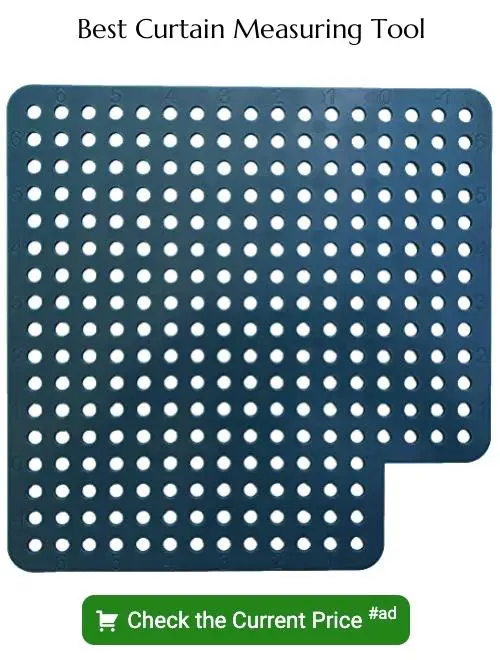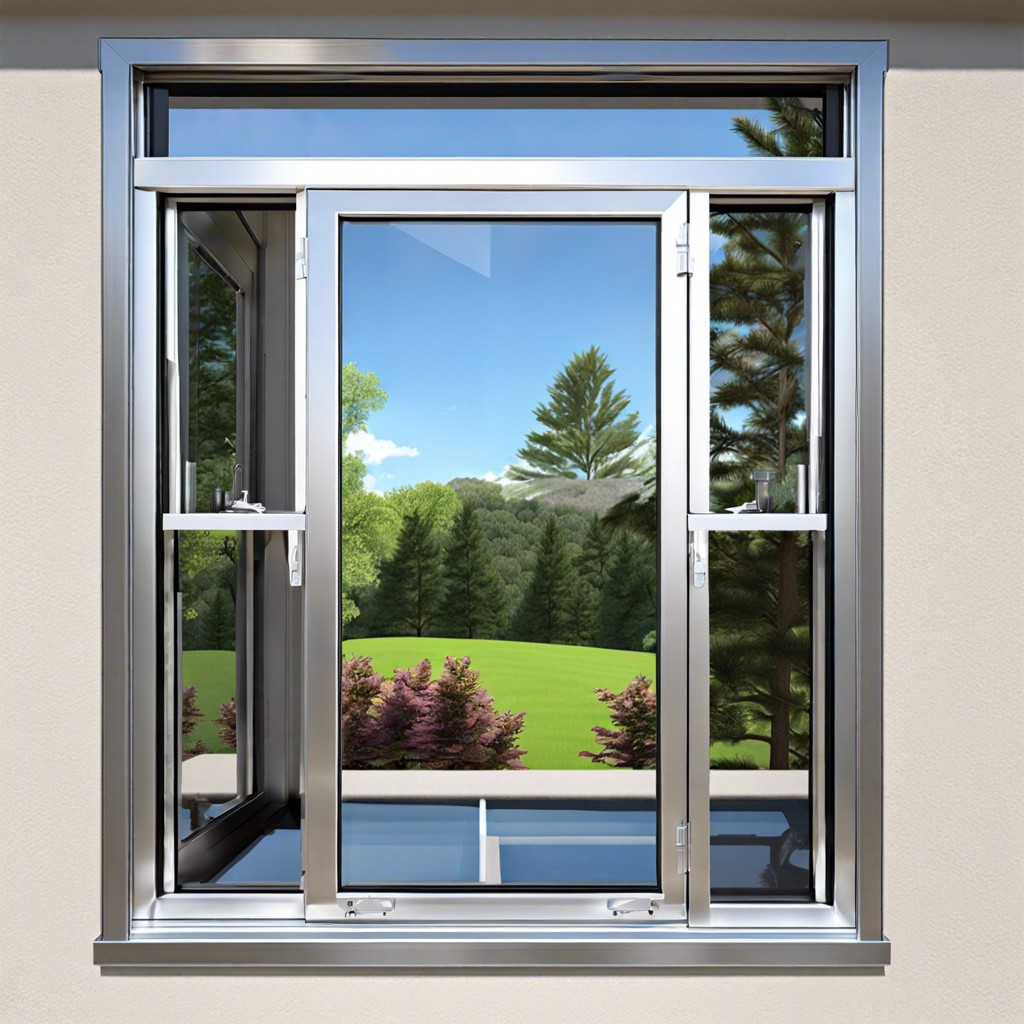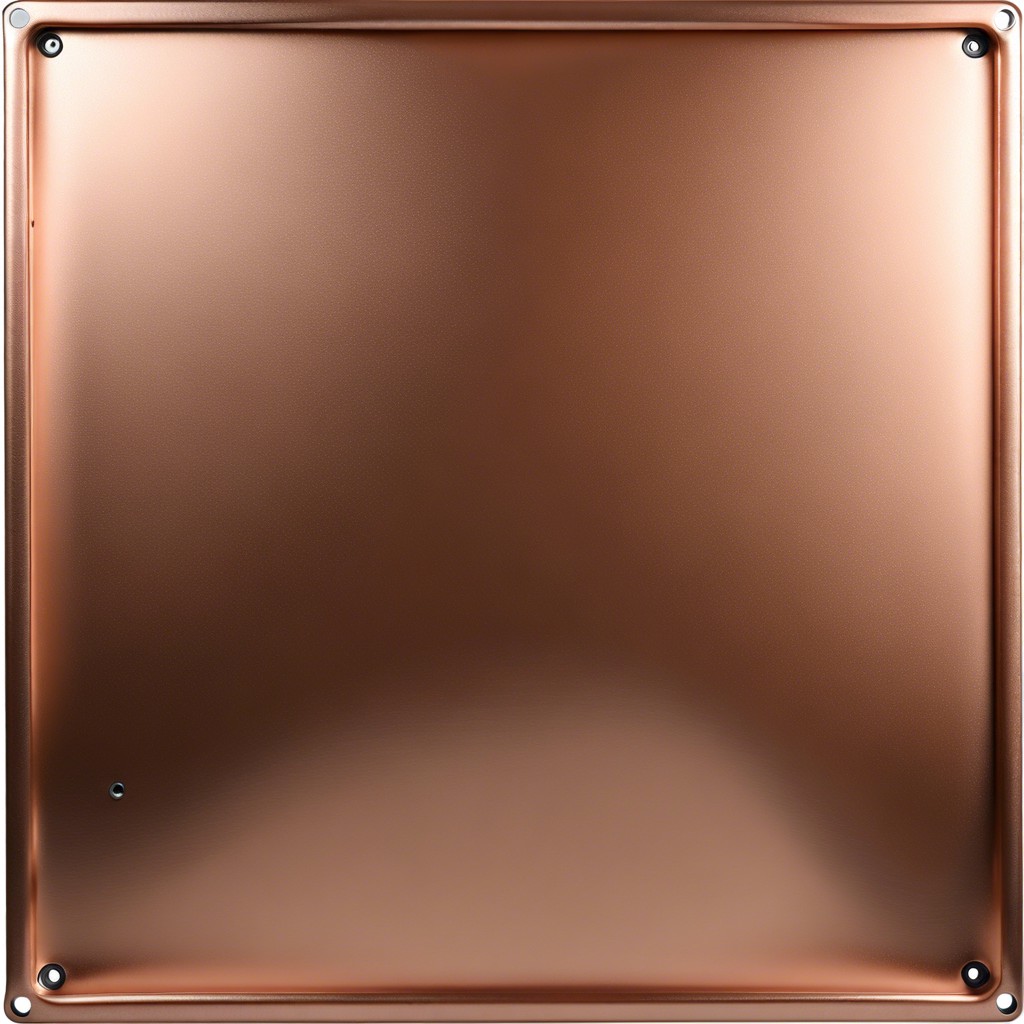Discover the essential steps to accurately calculate curtain width for any window in your home.
Calculating curtain width is a straightforward process that involves a few key measurements. Firstly, measure the width of your window including any frame. Then, to ensure your curtains have a full, gathered look when closed, multiply this figure by 1.5 to 2. This multiplication factor is known as the fullness ratio. For example, if your window width is 100 inches, your curtain width should be between 150 to 200 inches. This article will guide you through each step in detail, ensuring you get the perfect curtain width for your window.
Key takeaways:
- Measure the width of your window, then multiply by 1.5 to 2 for curtain width.
- Curtain width impacts aesthetics, functionality, insulation, and room balance.
- Consider window space, architectural elements, and curtain draping effect.
- Choose inside or outside mount curtain rods based on style and curtain type.
- Use a curtain size calculator to simplify measurements and ensure accuracy.
Understanding the Importance of Curtain Width
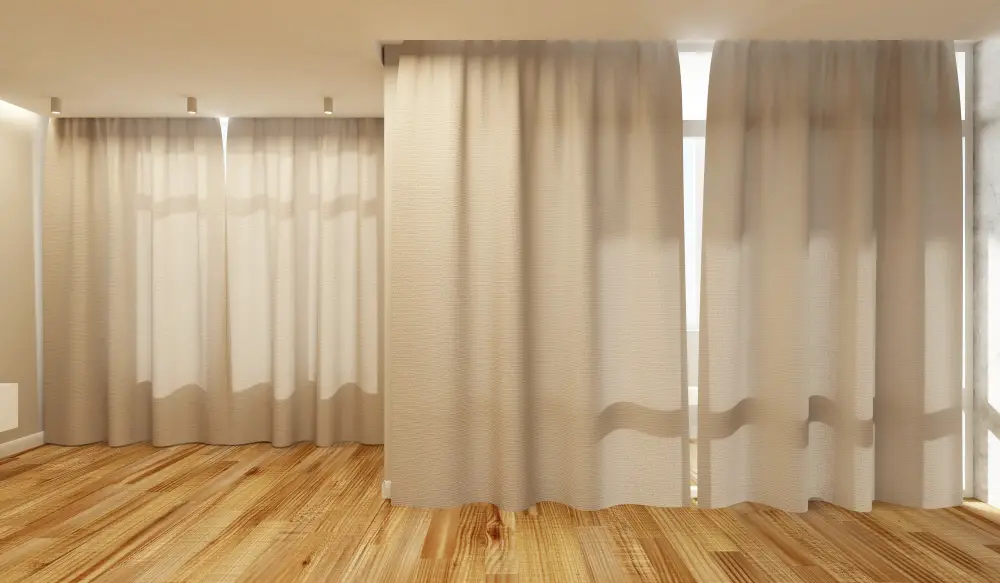
Curtain width plays a vital role in achieving a desirable aesthetic for your windows and home. It not only impacts the look of your room but also influences the functionality of the curtains.
A well-measured curtain width ensures complete coverage of the window for privacy and light control. It contributes to the efficiency of insulation, blocking cold air drafts and warming sunlight, subsequently influencing your energy expenditure on heating or air conditioning.
An appropriate curtain width is also essential in maintaining balance and symmetry in room decor. Too narrow curtains can make your windows look oddly skimpy, while overly wide ones can overwhelm the space.
Moreover, if you plan on drawing your curtains aside during the day, the width should accommodate proper gathering of the material at the sides without leaving the window pane excessively exposed or caused the curtains to balloon out awkwardly.
In addition, the right curtain width will deliver a good draping effect, letting the curtains hang nicely whether drawn or drawn aside. Remember, this draping effect can vary widely based on the fabric chosen. Stiffer fabrics need extra width for softer folds, while thinner, more flexible materials may require less.
Lastly, remember to factor in any decorative elements on the curtain that may affect the total width. Ruffles, pleats, or any added materials can expand the visual spread of your curtains, requiring possible adjustments in measurements.
By understanding these aspects deeply, you’ll be better equipped to calculate the optimal curtain width for your windows. Armed with your measurements, you can now move forward to the next essential step of determining any extra window space to be factored into your calculations.
Measuring the Width of the Window

Begin with the window frame’s measurements, starting at the left outer edge and following through to the right outer edge. This exact measurement will give the width of the window itself, a key factor in determining curtain width.
When measuring, ensure linear accuracy by employing a reliable tape measure. It’s also advised to record the readings in both inches and centimeters for future reference.
It’s essential to ascertain the depth of the window in relation to the wall. This will play an instrumental role when selecting the type of curtain rod and where it will be mounted.
Another crucial aspect to consider is whether the window features additional architectural elements like molding or built-in bookcases, which may influence the window treatment’s preferred dimensions.
Determining the Presence of Extra Window Space
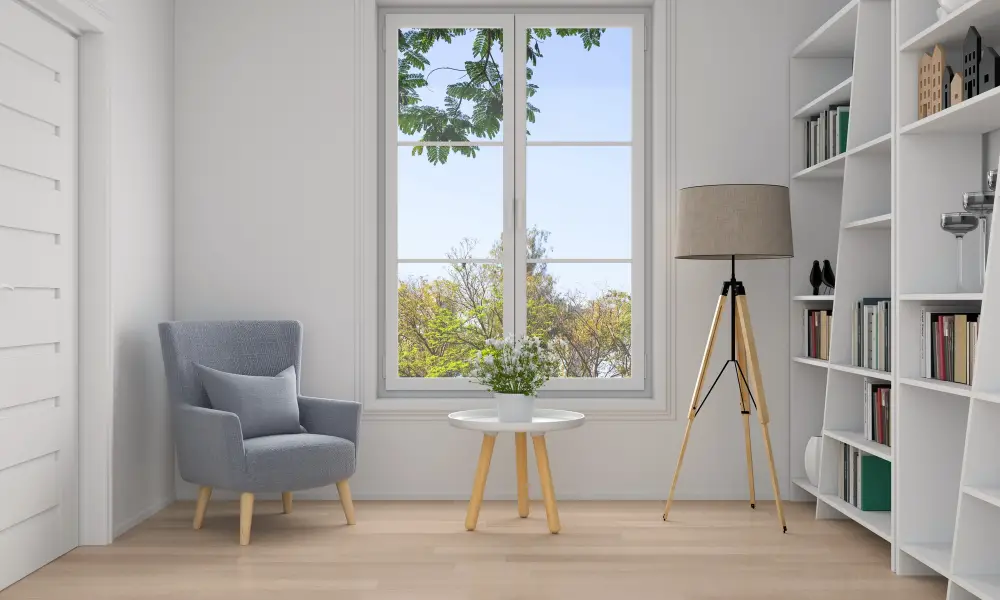
To properly assess extra window space, consider the surrounding furnishings and wall area as this can affect curtain placement.
Look left and right of your window. Do you have additional room? Could you extend your curtain rod 3 to 6 inches past the window frame? This technique can generate an illusion of wider windows while providing better light blockage when curtains are closed.
Check for any physical barriers such as a wall, or furniture that could restrict your expansion.
Don’t forget vertical space. Ideally, curtain rods should be placed around 6 inches above the window frame or closer to the ceiling, to create the appearance of a taller window.
These considerations will help you in deciding how wide your curtains need to be for optimal function and aesthetics.
Choosing the Correct Curtain Rod Mount

To select a suitable curtain rod mount, consider both the style of your space and the type of curtains you will hang. Mount types are usually broken down into two categories: inside mount and outside mount.
Inside mounts are attached to the interior of the window frame, providing a streamlined look. They’re ideal for windows with deep sills or if you prefer curtains that sit flush with the windowpane. Before selecting this option, ensure your window frame has enough depth to accommodate the mount.
On the other hand, outside mounts connect to the wall above and beyond the edges of the window. As an advantage, they make windows appear larger and hide unattractive frames. They also allow for more light blockage since curtains can extend past the window’s edges. For this option, you’ll need to have enough wall space on either side of your window.
Before making a final choice, measure and visualize how each would look in your space. Also, remember to consider the weight of your chosen curtains as heavy fabrics may require more supportive mounts.
How to Measure for Rod Width
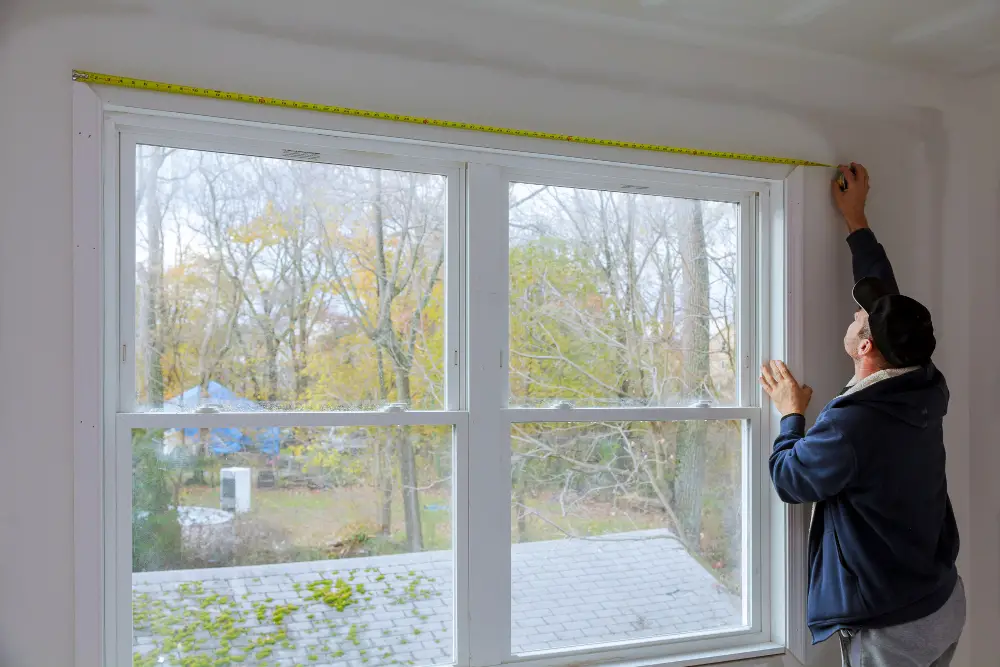
Begin with the span of your window, from one end to the other. Keep in mind this isn’t solely about the glass, but the entire window including the frame. Keep your tape measure flat and straight to ensure a proper measurement.
Next, determine where your curtain rod will be installed. Commonly, it’s about 4 to 6 inches above the window frame, and 2 to 3 inches beyond it on either side. However, if you desire a wider look or more draped effect, you could extend the measurement further.
This step is also an opportune time to decide on the type of rod bracket to be used. These brackets must be factored into your width measurement, as they will hold your curtain rod.
The final measurement should be the total of your window span and your determined extension on either side. The same method applies whether you’re using one long rod for the entire window or two smaller ones for each half.
Take note of your measurements. Record the final width and keep this information on hand for buying your curtain rod and calculating curtain width thereafter.
Calculating Required Curtain Width

First, begin with your total rod width. For a simple gathering effect in your curtains, you should multiply your total rod width by 1.5. However, if you want a fuller, luxurious, pleated look you may want to consider multiplying by a factor of 2 or even 2.5. Factoring in how you want your curtains to look and feel is crucial to achieving the desired aesthetic.
Knowing this, if your rods are 70 inches wide and you want a simple gather, you will require curtain panels totalling 105 inches wide (70 inches x 1.5 = 105 inches). On the other hand, if you prefer a fuller grouping, using the same 70 inch rod, you might need panels totalling 140 inches or even 175 inches wide (70 inches x 2 = 140 inches; 70 inches x 2.5 = 175 inches).
Do remember, these measurements are for the total curtain width. For two panel treatments, you’ll need to divide this final number by two to get the width of each individual panel.
Getting the width right not only ensures your curtains will function correctly, it also plays a big role in achieving a visually pleasing drape. Going through these steps will ensure an estimate that meets your specific needs.
Deciding On the Appropriate Curtain Break

The curtain break refers to where the bottom of the curtains fall in relation to your window or door. It is a crucial dimension that must not be overlooked.
- Floor-Length Break: A common choice is to have curtains that are just fractionally off the floor, allowing them to hang well but prevent any dragging. This lends a clean, contemporary feel to a room.
- Puddle Break: For a luxuriously elegant look, consider the puddle break, where curtains gently ‘puddle’ onto the floor. This works best with heavier, flowing materials.
- Above-Sill Break: If the window sill is tall, curtains can hang to just above the sill. Besides offering an informal and casual look, this option prevents the curtains from interfering with radiators or furniture below.
- Below-Sill Break: With short, bench-style window sills, the below-sill break allows the curtain to hang about 15 centimeters under the sill, providing a neat look and feel.
Once the appropriate curtain break is chosen, ensure the length is reflected in the measurements when purchasing or ordering curtains.
Using a Curtain Size Calculator for Width and Length

A curtain size calculator is a beneficial tool generally available online that helps you crunch numbers swiftly and accurately. Here’s how it simplifies the process:
After taking measurements, input the window width into the calculator. Remember to account for the extra space. The calculator will automatically multiply this by either 1.5 or 2, based on the desired degree of fullness.
The next step is to key in the curtain drop or length. Make sure you have measured from the curtain rod till your preferred length. Quite often, people prefer the long draping effect that slightly pools on the floor.
In case of curtains with tab or tie tops, remember to add that particular length to your total length in the calculator.
Lastly, always cross-check these measurements against the dimensions of available curtains before purchasing.
Avoiding Common Missteps in Determining Curtain Width
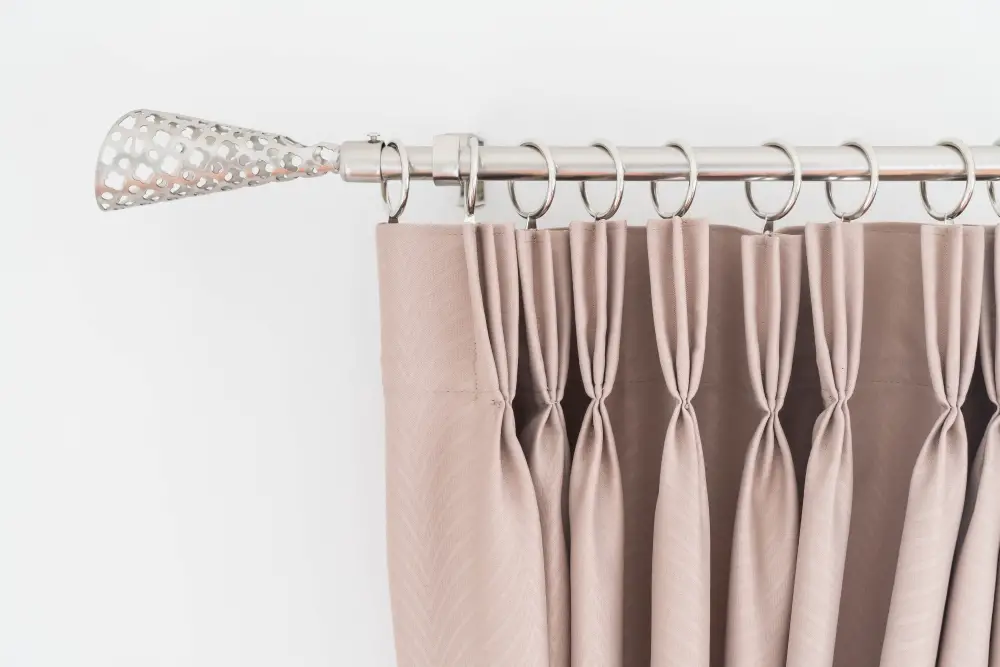
Many homeowners often fall prey to a number of common errors in their quest for perfect curtain width.
Firstly, a frequently observed slip-up is neglecting to account for window moulding. It’s crucial to measure the width from outside edge to edge of the moulding and not just the glass.
Secondly, overlooking the importance of rod placement can lead to curtain less appealing when drawn back. Ensure the rod extends at least 3 to 6 inches beyond the window frame on both sides, offering sufficient space for your curtains to fall naturally.
Thirdly, an all too common mistake is underestimating the fullness for pleated curtains. These style of curtains should be approximately twice the final measured width to provide a nicely gathered or pleated look.
Lastly, failing to consider the type of curtain heading is another common pitfall. Each heading type, whether it be eyelet, pencil pleat or tab top, affects the width differently. Thus, it’s pertinent to factor in the heading type when calculating the curtain width.
By keeping these potential errors in mind, you can ensure a fitting curtain width that enhances your room’s aesthetics and functions impeccably.
FAQ
What is the formula for curtain width?
The formula for curtain width is that the combined width of the curtain panels should be 2 to 2.5 times the width of the window or rod.
How wide should curtains be for 60 inch window?
For a 60 inch window, the ideal curtain width should be anywhere between 90 inches to 180 inches, although two curtain panels each measuring 60 inches wide would achieve a full and opulent look.
How wide should curtains be for 84 inch window?
For an 84-inch window, curtains should ideally be 168 to 210 inches wide if you plan to close them, or at least 126 inches wide if you don’t intend to close them.
How wide should curtains be for 48 inch window?
For a 48-inch window, each curtain panel should have a minimum width of 30 inches, considering a two-panel setup.
What factors influence the optimal width of curtains for varying window dimensions?
The optimal width of curtains for varying window dimensions is influenced by factors such as window size, the desired amount of fabric fullness, privacy needs, and the aesthetic preferences of the owner.
How does the material of the curtains impact the required width for different window sizes?
The material of the curtains doesn’t impact the required width for different window sizes as it primarily depends on the window size and desired curtain fullness.
Are there any specific measuring techniques for determining curtain width for bay windows?
To determine curtain width for bay windows, measure the total combined width of the windows and add 20-30% for fullness and overlapping in the center and ends.
Recap
